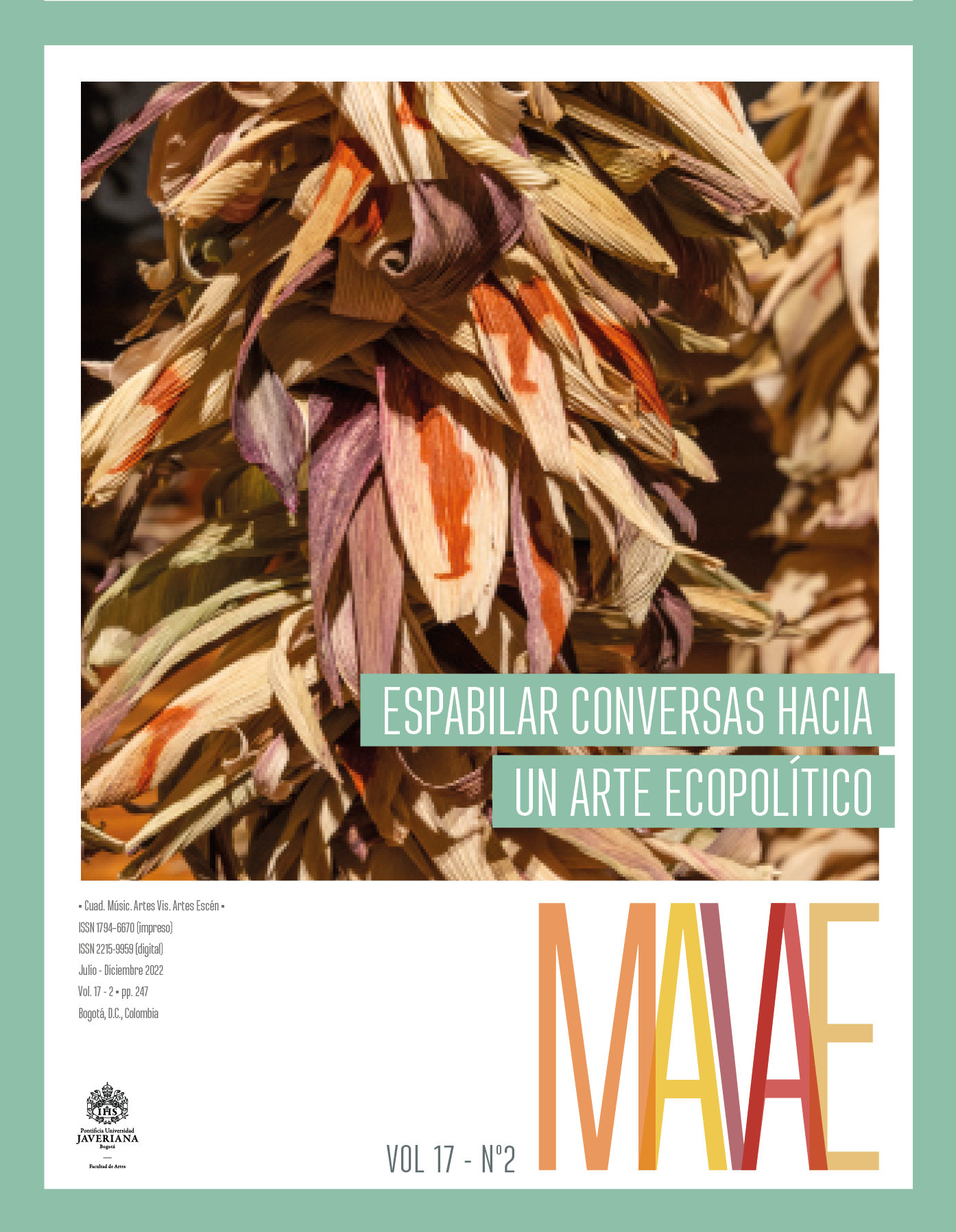Resumen
A través de una serie de extractos a modo de crónica, se relata el proceso de un artista que asume las huellas que hace sobre la tierra como espacios de experimentación y conjugación de aquello que conforma su contexto. Aquí, las aguas, los bosques y el pozo se convierten en un mismo universo que se teje bajo la experiencia y la experimentación, junto con la intención de asumir un territorio que se hace por medio de negociaciones entre lo humano y lo no humano. Este relato es un fragmento de una investigación de un artista que cursa una Maestría en Conservación y Uso de Biodiversidad que aborda el problema del Antropoceno como un detonante para preguntarse sobre cómo una huella que se asume a modo de jardín, desde el mundo cotidiano, cercano y particular, tiene el potencial de abrir divergencias sobre nuestra relación con el entorno y lo que allí habita. ¿Hay otra manera de ser y hacer huellas que no implique socavar? Desde los gestos, el caminar y la vivencia de los espacios, esta pregunta se irá respondiendo, mientras se encuentran maneras de entender los signos de un espacio intervenido que intenta brindar nuevas miradas más allá del antropocentrismo.
Afanador Salas, María Camila. 2015. Tejiendo huellas: Revitalización sobre las canteras del río Tunjuelo en Bogotá [tesis de grado Pontificia Universidad Javeriana]. https://repository.javeriana.edu.co/handle/10554/18305.
Beruete Valencia, Santiago. 2016. Jardinosofía: Una historia filosófica de los jardines. Madrid: Turner.
Davis, Heather y Etienne Turpin, eds. 2015. Art in the Anthropocene: Encounters Among Aesthetics, Politics, Environments and Epistemologies. Londres: Open Humanities Press. https://library.oapen.org/handle/20.500.12657/33191.
Didi-Huberman, Georges. 1997. Lo que vemos, lo que nos mira. Buenos Aires: Manantial.
Foucault, Michel. 1984. “Topologías: Dos conferencias radiofónicas”.Fractal, n.º 48: 39-40. https://www.mxfractal.org/articulos/RevistaFractal48MichelFoucault.php.
Ginn, Franklin. 2014. “Sticky Lives: Slugs, Detachment and More‐than human ethics in the Garden”. Transactions of the Institute of British Geographers 39, n.º 4: 532-544.
Hermelín, Michel, ed. 2005. Desastres de origen natural en Colombia, 1979- 2004. Medellín: Universidad Eafit.
Ingold, Tim. 2007. Lines: A Brief History. Londres: Routledge.
Latour, Bruno. 2015. “Diplomacy in the Face of Gaia”. En Art in the Anthropocene: Encounters Among Aesthetics, Politics, Environments and Epistemologies, editado por Davis Heather y Etienne Turpin,43-55. Londres: Open Hummanities Press. https://library.oapen.org/ handle/20.500.12657/33191.
Mejía Mosquera, Juan Fernando. 2014. “Arte y naturaleza como producción”.En Arte y naturaleza, editado por Dilma Valderrama Gil, 105-120.Bogotá: Universidad Distrital Francisco José de Caldas.
Zambrano Pantoja, Fabio Roberto. 2004. Historia de la localidad de Tunjuelito: El poblamiento del valle medio del río Tunjuelo. Alcaldía Mayor de Bogotá. http://ieu.unal.edu.co/nuevas-adq/item/143-librohistoria-localidad-tunjuelito.

Esta obra está bajo una licencia internacional Creative Commons Atribución 4.0.


